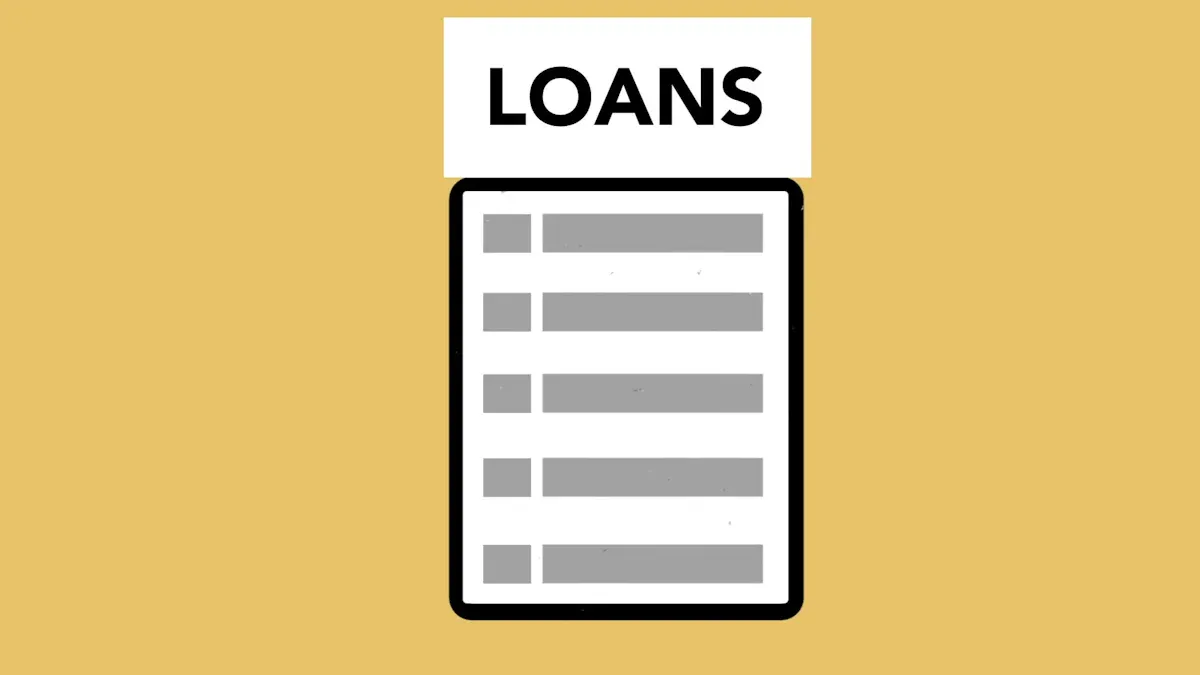Image Source: pexels
Choosing the right insurance online can feel confusing, but it’s an important decision for your financial safety. With so many options available, how do you decide? An ‘Online Insurance Buying Guide: How to Choose the Right Product’ can be incredibly helpful. Reviews play a significant role—90% of people read at least three reviews before making a choice. Additionally, 75% seek online advice prior to selecting a policy. These statistics highlight the importance of thorough research.
Better digital tools now make it easier to compare plans, but understanding more about your options is still crucial to keep up with changes in the market.
The best insurance isn’t solely about cost; it’s about finding a product that fits your needs and provides you with a sense of security.
Key Takeaways
- Know your money goals before picking insurance. This helps you find a plan that works for you.
- Compare what is covered and what is not. Reading details can stop surprises later.
- Check for deals and think about combining plans. This saves money and keeps good coverage.
Understanding Your Insurance Needs
Picking the right insurance starts with knowing what you need. Let’s go through it step by step.
Looking at Your Financial Goals
Your money goals help decide the best insurance for you. Do you want to protect your family, save for retirement, or cover medical costs? Knowing your goals makes choosing easier.
Here’s a simple checklist to match your goals with insurance:
- Think about big plans, like buying a house or paying for school.
- Use tools like checklists to make decisions simpler.
- Plan early to get the most from your insurance.
When your goals match your insurance, you’re ready for financial success.
Picking the Right Insurance Type
Different insurance types work for different needs. Health insurance helps with medical bills. Life insurance supports your family if something happens to you. Auto insurance protects your car, and home insurance keeps your house safe.
Studies show things like health and income affect insurance choices. Check this table for details:
| Factor | Year | Effect on Health Insurance Coverage | Notes |
|---|---|---|---|
| Health Status | 2008 | Big Impact | Strong link between health and insurance coverage. |
| Income Level | 2008 | Big Impact | Higher income means better chances of having insurance. |
Knowing these facts helps you pick the right insurance for your life.
Choosing Your Coverage Amount
After picking a type, decide how much coverage you need. Too little leaves you unprotected. Too much can cost too much.
For example, some companies change prices based on jobs or education. One person saved $1,800 a year by switching to a cheaper plan with less coverage. This shows how coverage and costs can differ.
Take time to compare plans. Find one that fits your budget and keeps you safe.
Researching and Comparing Policies

Image Source: unsplash
After knowing your insurance needs, start researching and comparing plans. This might seem hard, but breaking it into steps helps.
Checking Policy Coverage and Exclusions
First, check what each policy covers and what it doesn’t. Coverage shows what the insurance pays for, while exclusions are things it won’t. For instance, a health plan may cover hospital stays but not certain treatments.
Tip: Always read the small details. Missing exclusions can leave you unprotected. If confused, ask the insurer for help.
Pro Tip: Write down your must-have coverage needs. Compare them with exclusions in each policy. This avoids surprises later.
Comparing Premiums and Deductibles
Premiums are regular payments for your insurance, while deductibles are what you pay before coverage starts. Lower premiums may seem better but often have higher deductibles.
Think about how often you’ll use the insurance. If you’ll claim often, a higher premium with a lower deductible might save money.
| Plan Type | Monthly Premium | Deductible | Best For |
|---|---|---|---|
| Plan A | $50 | $1,000 | Rare claims |
| Plan B | $100 | $500 | Frequent claims |
Looking at Extra Features or Riders
Some policies offer extras, like riders, to improve coverage. For example, life insurance might include critical illness coverage. These extras can help but cost more.
Ask yourself: Do you need these extras? If they match your goals, they’re worth it. If not, stick to basics to save money.
By reviewing these points, you’ll feel sure about your choice. The "Online Insurance Buying Guide: How to Choose the Right Product" is here to guide you.
Evaluating Insurers
Picking the right insurer is as important as the policy. Here’s how to check if an insurer is trustworthy.
Checking Reputation and Customer Reviews
An insurer’s reputation shows how reliable they are. Start by reading reviews online. Did you know 98% of people check reviews before deciding? Half of them trust reviews like advice from friends. Look for common feedback—are customers happy? Do they mention fast help or good service?
Also, see how insurers handle bad reviews. About 66% of people want a reply within three days. If replies are slow or seem fake, it may show poor care.
Tip: Stay away from insurers that use too many AI-made replies. Studies say 60% of people lose trust in brands that do this.
Assessing Financial Stability
A strong financial insurer can pay claims when needed. Check ratings from places like A.M. Best or Moody’s. These scores show if an insurer can meet money promises.
You can also check numbers like the loss ratio (claims paid compared to premiums) or growth in policy sales. Here’s a quick guide to key metrics:
| Metric | Description | Importance |
|---|---|---|
| Loss ratio | Claims paid out as a percentage of total premiums earned. | Shows how well the insurer handles money. |
| Policy sales growth | Measures new policies sold over time. | Shows how popular the insurer is in the market. |
| Renewal/retention | Measures customer retention after the initial term. | High rates mean customers are happy. |
Reviewing Claims Process and Customer Support
The claims process affects your experience with an insurer. A quick, clear process builds trust and keeps you informed. Insurers using digital tools often handle claims faster, avoiding mistakes or delays.
Here’s what to check:
- Speed: Fast claims make customers happier.
- Transparency: Updates on claim status keep you informed.
- Support: Friendly, easy-to-reach help makes things smoother.
Note: Insurers using AI and smart tools often give better service. This focus on speed and accuracy reduces stress when you need help.
By checking these points, you’ll feel sure about your insurer choice. Remember, the "Online Insurance Buying Guide: How to Choose the Right Product" is here to guide you.
Tips for Saving Money
Saving on insurance can be simple with smart choices. Use these tips to lower costs while keeping good coverage.
Finding Discounts and Promotions
Many insurers give discounts to attract customers. You might save based on your job, age, or driving history. For example, safe drivers or students with high grades often pay less.
Tip: Look for holiday or year-end deals. Many insurers offer special promotions during these times.
Ask about loyalty discounts if you’ve stayed with the same insurer. A quick call could reveal extra savings.
Bundling Policies for Savings
Combining policies with one insurer is an easy way to save. For example, bundling home and car insurance can lower costs.
Here’s why bundling works:
- It reduces rates when you insure multiple things together.
- Adding more policies, like life or motorcycle insurance, boosts savings.
- About 80% of people bundle and save up to 25%.
| Statistic | Value |
|---|---|
| Potential Discounts | Up to 25% |
| Consumers Bundling | About 80% |
Bundling saves money and makes managing policies easier.
Adjusting Deductibles Strategically
A deductible is what you pay before insurance helps. Raising it lowers your monthly cost. But make sure you can afford the higher amount if you file a claim.
For example, if you rarely use insurance, a higher deductible might work. If you expect claims often, choose a lower deductible to avoid big bills.
Note: Match your deductible to your budget. Saving on premiums won’t help if you can’t pay the deductible later.
By using these tips, you can cut costs without losing coverage. The "Online Insurance Buying Guide: How to Choose the Right Product" helps you make smart decisions.
Common Mistakes to Avoid
Even with good planning, buying insurance online can be tricky. Let’s explore common mistakes and how to avoid them.
Skipping the Small Details
Not reading the small details can cause big problems later. Policies often have limits or exclusions you might miss. For example:
- Some health plans don’t cover certain treatments or conditions.
- Life insurance may not cover risky activities like skydiving.
If you skip these details, claims might get denied. It’s your job to understand your policy. Read exclusions and terms carefully. Asking questions now avoids problems later.
Tip: Mark important parts of your policy. Write down unclear points. Ask the insurer for answers before buying.
Choosing Too Little or Too Much Coverage
Getting the right coverage amount is hard. Too little leaves you unprotected. Too much can cost more than needed. For example, underinsuring your home might not cover repairs after a disaster. Overinsuring means paying for coverage you won’t use.
Start by checking your risks and needs. Use online tools or ask an expert if unsure. Match your coverage to your life and money goals.
Picking Price Over Quality
Choosing the cheapest plan might seem smart but can backfire. Low-cost plans often have less coverage or higher deductibles. Imagine needing care and finding out your plan doesn’t help. That’s a tough spot to be in.
Instead, think about what the policy offers. Does it meet your needs? Are the benefits worth the price? Spending a bit more might give better protection and peace of mind.
Remember: Insurance protects your future. Balance cost with good coverage to stay safe.
Avoiding these mistakes helps you make better choices and feel confident about your insurance.
Picking the right insurance online can be simple. Begin by knowing what you need, then compare plans and check insurers. Look at cost, coverage, and trustworthiness to find the best match. Good information helps insurers make better choices, and it can help you too. Study carefully, ask questions, and choose wisely with confidence.
Tip: Smart tools like AI and reliable data help both insurers and buyers make better decisions. Use them to make smarter choices!
FAQ
What papers do you need to buy insurance online?
You’ll need an ID, income proof, and details about what’s insured. Some insurers might ask for extra papers.
How do you know if an insurer is reliable?
Check customer reviews, money ratings, and claims process info. Good insurers have strong reputations and clear rules.
Can you stop an insurance policy after buying it online?
Yes, most insurers let you cancel. Look at the cancellation rules. Some might charge fees or give refunds based on usage.
Tip: Always check the cancellation rules before buying to avoid problems later.




